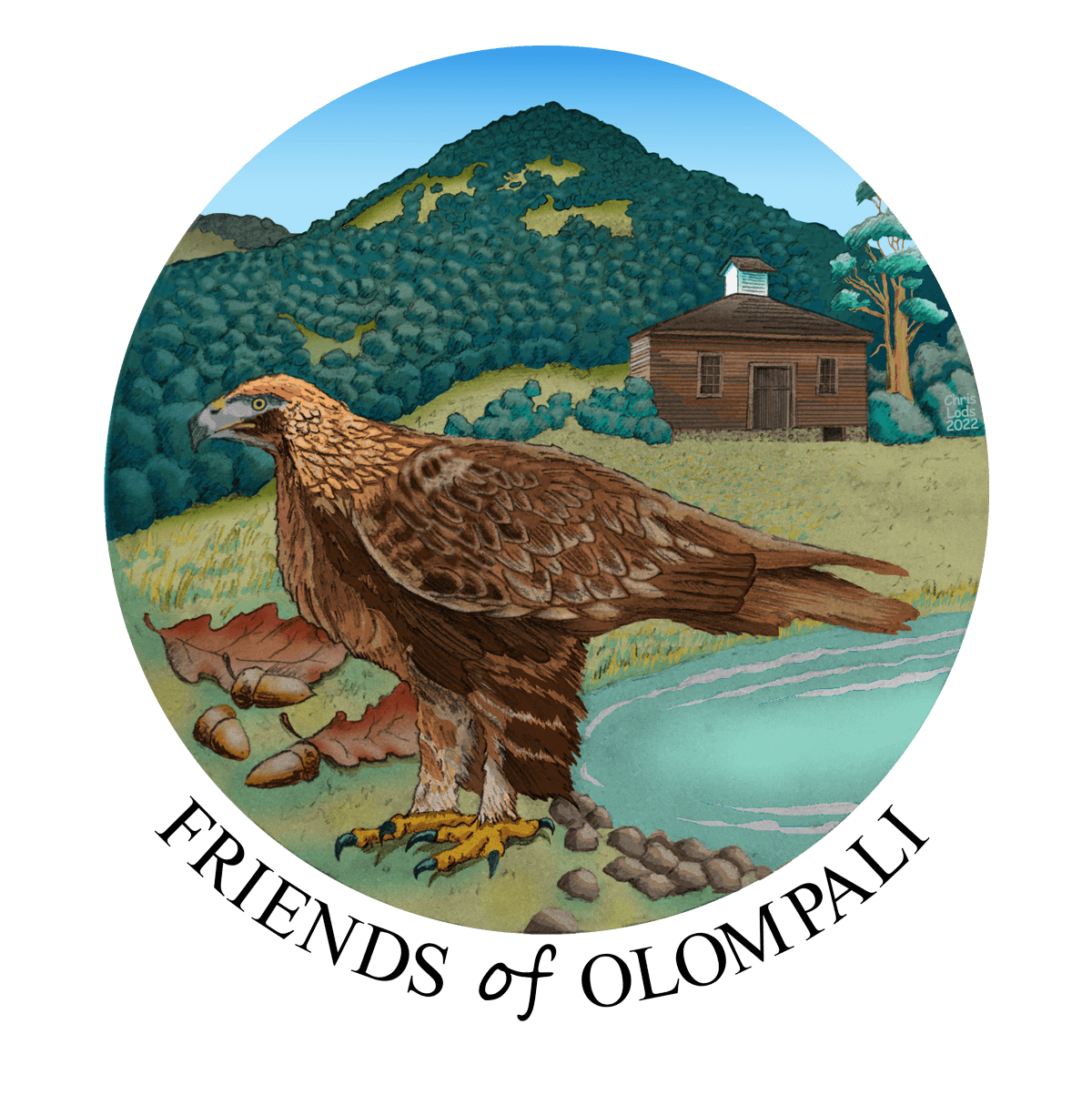A Wonderland of Animal Life
Olompali's oak woodland and oak savanna intermingle within the park and support similar assemblages of wildlife. High foliage height and density and a diversity of plant species support an abundance of animal life.
The oaks provide food for mule deer, scrub jays, band-tailed pigeons, and acorn woodpeckers. Natural cavities in older oaks provide nest sites for western bluebirds, western screech owls, white-breasted nuthatches, and western gray squirrels. Western skink, racer, and gopher snake are common reptiles, as are fence lizards and alligator lizards.
Grassland birds that frequently nest at the park include horned lark, grasshopper sparrow, and lark sparrow. Western meadowlark and Brewer's blackbird are also commonly found in the grassland. Wild turkeys are growing in number, and can be sighted in the Burdell Walnut Orchard. Common burrowing mammals are broadfooted mole, California vole, California ground squirrel, and Botta's pocket gopher. Predators include badger, coyote, gray fox, northern harrier, and red-tailed hawk. Now and then there is the rare sighting of a mountain lion.
Chaparral is intermediately found between the woodlands, savannah, and grassland areas. The biological diversity in the chaparral is relatively low because of the extremely aged plants. There are amazingly old stands of the dazzling purple barked manzanita. Anna's hummingbird, wren-tit, and orange-crowned warbler can be found here. Brush rabbit, deer mouse, and dusky-footed wood rat thrive under the dense cover the chaparral provides. Skunks and bobcats are the major predators. Mule deer often forage and find shelter in the chaparral.
Seven hundred-acre Olompali State Historic Park occupies a unique location within a bowl-shaped area formed by Burdell Mountain and its lower flanking slopes. These hills adjoin the expansive marsh and slough system of the Petaluma River, which flows south to San Pablo Bay.
Wetland snags and rock outcrops are special wildlife habitat areas in the park. The wetland habitats are the intermittent and permanent sections of streams, seeps and springs, as well as the reservior. These areas provide green forage and water, and are especially important during the onset of summer's drought. The snags provide shelter for cavity nesting birds and mammals, and are the survey sites for the park's raptors. Raccoons abound.
The rock outcrops are in the park's serpentine are in the park's serpentine areas and are used by foxes and coyotes for dens.
Olompali is home to a large, successful colony of pallid bats (Antrozous pallidus), as well as the tiny mosquito eating Myotis californicus. In fact, the species of bats documented at Olompali also include the big brown bat, hoary bat, western red bat, Townsend's big-eared bat, Mexican free-tail bat, and Yuma myotis.
The park has become a safe haven for bats because of the protection it provides in its protected wild lands, lack of pesticide use, old snag trees, and preserved historic buildings in which bats can roost.
Although no threatened or endangered animal species are found at Olompali, golden eagle and black-shouldered kite are known to have nested here.


